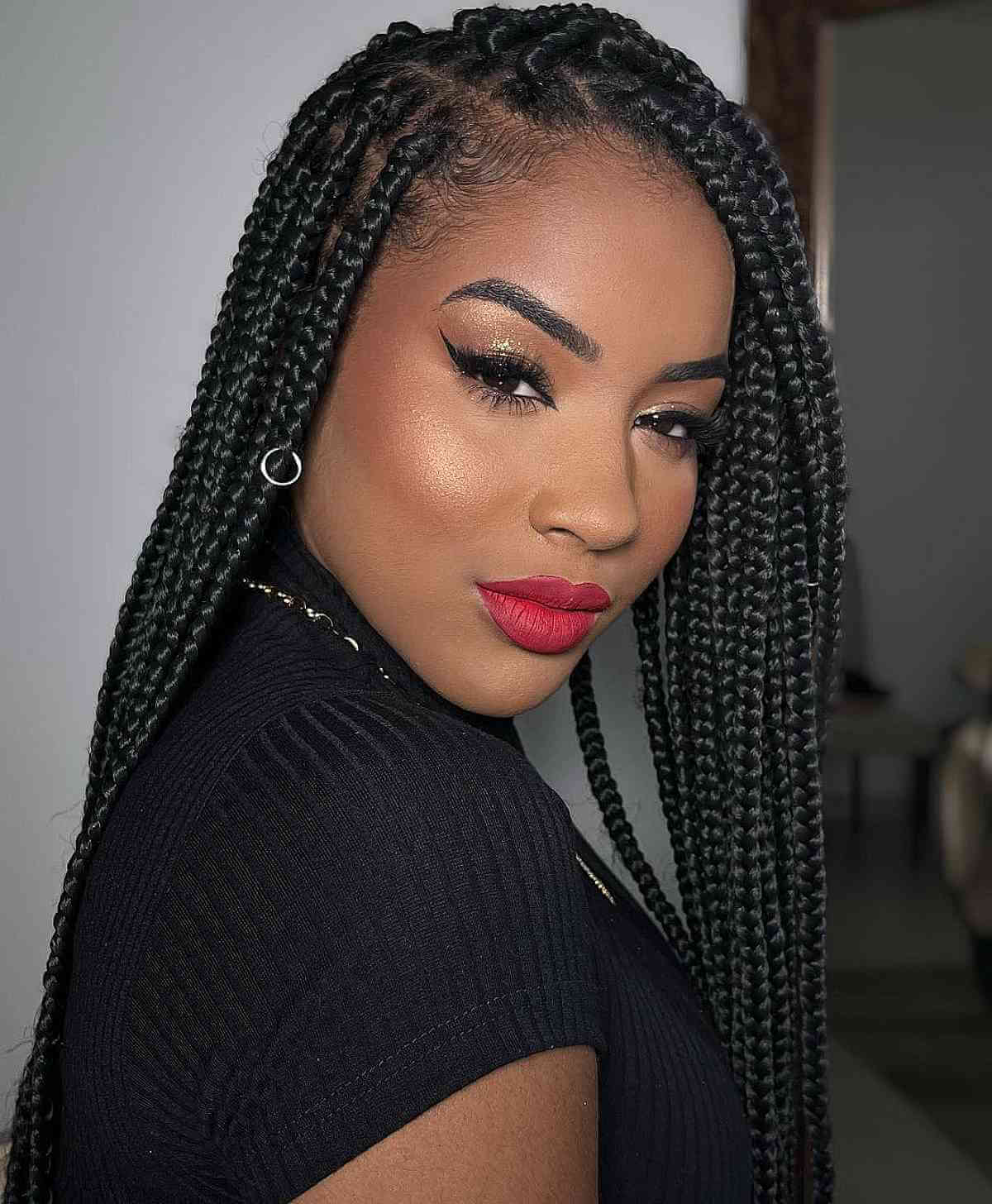Black Women's Hair Health: Examining The Risks Of Synthetic Braids

Table of Contents
Traction Alopecia and Hair Loss from Tight Braiding
Tight braiding is a major culprit behind hair loss in Black women who wear synthetic braids. This condition, known as traction alopecia, occurs when the consistent pulling force of tight braids on hair follicles causes inflammation, weakening, and eventually, damage to the hair follicle. Over time, this can lead to significant hair thinning and even permanent hair loss.
-
Stages of Traction Alopecia: Traction alopecia develops gradually. Initial stages may involve mild scalp irritation and tenderness. As the condition progresses, hair breakage increases, and a receding hairline or thinning patches may become noticeable. In advanced stages, permanent hair loss can occur.
-
Symptoms: Pay attention to these warning signs: persistent scalp pain or tenderness at the hairline or braid attachments; inflammation or redness of the scalp; noticeable thinning or receding hairline; and increased hair breakage.
-
Proper Braiding Tension: The key to preventing traction alopecia is to ensure your braids aren't too tight. Gentle tension is sufficient to secure the braids without causing undue stress on the hair follicles. Communicate your concerns about tightness to your stylist.
-
Reversibility: Early-stage traction alopecia is often reversible with proper care, including loosening braids, giving your scalp a break from styles that pull on the hair, and employing gentle hair care practices.
Scalp Irritation and Infections from Synthetic Braids
The intricate nature of synthetic braids, coupled with infrequent washing, creates a perfect environment for scalp irritation and infections. Sweat, oils, and dirt can accumulate under the braids, providing a breeding ground for bacteria and fungi. This can lead to various scalp problems, ranging from mild irritation to more serious infections.
-
Common Scalp Infections: Fungal infections like tinea capitis and bacterial infections such as folliculitis are common concerns associated with synthetic braids.
-
Scalp Cleanliness: Maintaining excellent scalp hygiene is paramount. Before getting braids, ensure your scalp is clean. While wearing braids, use gentle, sulfate-free cleansers designed for sensitive scalps to cleanse your scalp and hair regularly.
-
Cleaning Techniques: Use a diluted, anti-fungal shampoo (as recommended by a dermatologist) to cleanse your scalp thoroughly. You may need to part your braids carefully to ensure full cleansing. Avoid harsh scrubbing.
-
Signs and Symptoms of Scalp Infections: Watch out for persistent itching, redness, scaling, pus-filled bumps, or sores on the scalp. If you notice any of these symptoms, consult a dermatologist immediately.
Hair Breakage and Damage from Synthetic Braid Removal
The removal of synthetic braids can be just as damaging as the braiding process itself. Improper removal techniques often lead to significant hair breakage and damage. Pulling or tugging on the braids can cause hair to snap, resulting in split ends, breakage, and overall hair damage.
-
Proper Braid Removal Techniques: Always use a gentle approach for braid removal. Start by carefully loosening the braid base, working your way down to the ends. Use a detangling spray or conditioner to lubricate the hair and make the process smoother.
-
Recommended Products: Use a leave-in conditioner or detangling spray specifically designed for reducing breakage and tangles. These products help to minimize friction and make the hair more manageable during the removal process.
-
Deep Conditioning: After braid removal, indulge in deep conditioning treatments to nourish and repair damaged hair. These treatments will help to restore moisture, strengthen the hair shafts, and improve overall hair health.
-
Regular Trims: Regular trims are essential for removing split ends caused by braid wear. This prevents further damage and promotes healthier hair growth.
Choosing the Right Stylist and Maintaining Healthy Braids
Selecting a skilled and experienced braider is crucial for minimizing the risks associated with synthetic braids. A qualified stylist understands proper braiding techniques, recognizes signs of potential problems, and prioritizes scalp health.
-
Finding a Qualified Stylist: Look for a stylist with positive reviews, who specializes in natural hair, and has experience with various braiding styles. Don't hesitate to have a consultation to discuss your hair goals and concerns.
-
Regular Checkups: Schedule regular checkups to monitor your scalp's health during the time you are wearing the braids. This allows for early detection of any potential problems and enables timely intervention.
-
Hair Washing Techniques: Ask your stylist about appropriate washing techniques while wearing braids. They may suggest specific methods for cleansing your scalp and preventing buildup.
Conclusion
Synthetic braids offer a versatile and fashionable styling option for Black women, but understanding the potential risks is paramount. Tight braiding, poor hygiene, and improper removal techniques can significantly impact hair health, leading to traction alopecia, scalp infections, and substantial hair breakage. By prioritizing proper braiding techniques, maintaining meticulous scalp hygiene, and employing gentle removal methods, Black women can minimize these risks and enjoy the beauty of synthetic braids while preserving the health and vitality of their precious hair. Learn more about protecting your hair health and choosing the right synthetic braid style for you!

Featured Posts
-
 Georgia Hemp Laws Explained Products You Can Purchase Today
May 27, 2025
Georgia Hemp Laws Explained Products You Can Purchase Today
May 27, 2025 -
 Teylor Svift Rekordnye Prodazhi Vinila Za Poslednee Desyatiletie
May 27, 2025
Teylor Svift Rekordnye Prodazhi Vinila Za Poslednee Desyatiletie
May 27, 2025 -
 Experience Alien Rogue Incursion Enhanced Edition A Next Gen Vr Update
May 27, 2025
Experience Alien Rogue Incursion Enhanced Edition A Next Gen Vr Update
May 27, 2025 -
 The Knives Out Franchise Beyond Daniel Craigs Involvement
May 27, 2025
The Knives Out Franchise Beyond Daniel Craigs Involvement
May 27, 2025 -
 Bollywood News Honey Singhs Payal Reaches 200 Million Views Dedicated To Nora Fatehi
May 27, 2025
Bollywood News Honey Singhs Payal Reaches 200 Million Views Dedicated To Nora Fatehi
May 27, 2025
